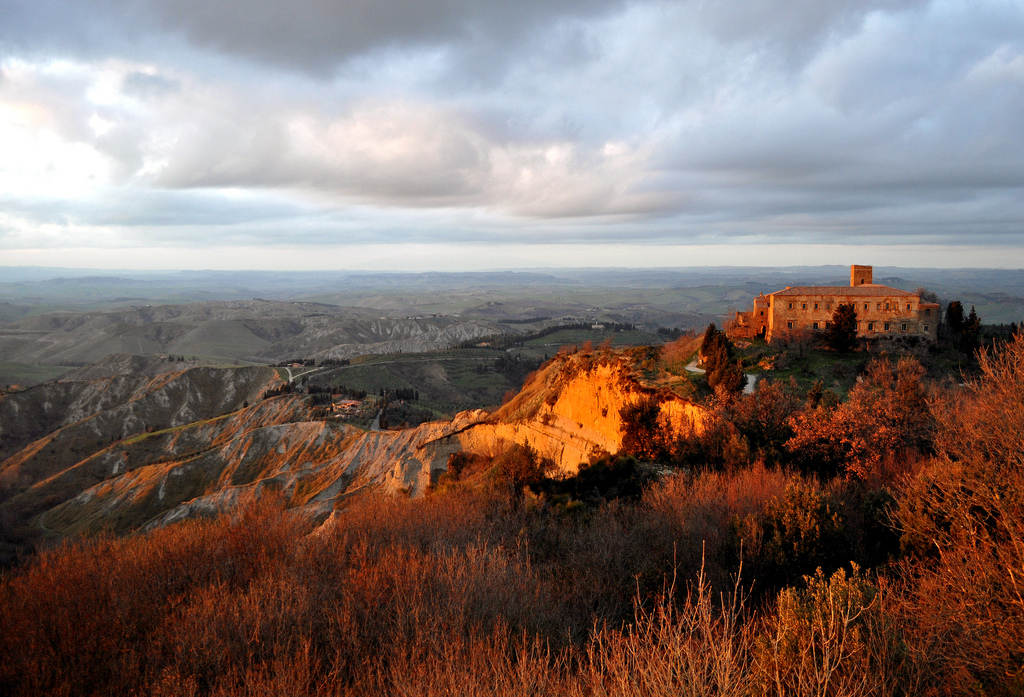Volterra, One of the Most Important Cities of the Etruscan Dodecapolis
Perched high on a hardly accessible hill and surrounded by majestic walls, Volterra represents a jewel of Etruscan, Roman, Medieval and Renaissance art; thanks to its relative isolation, we could say that it has never suffered the debilitating effects of urbanization. According to tradition, it was one of the most important city-states of the Etruscan Confederation and reached its peak between the V and I centuries B.C., when the southern city-states started to decline because of their closeness to Rome. When also Velathri became a municipium, it continued to maintain a certain degree of independence until the civil war between Marius and Sulla broke out and the Etruscans were brought to their knees. In the 5th century A.D., it became the seat of a diocese but the despotic actions of Galgano Pannocchieschi laid also the foundation for the anti-episcopal riot, that was soon leaded by the local lords and the emerging middle classes. In 1208, the bishops started to decline and the extraordinary Palazzo dei Priori became the symbol and the seat of the free commune.
Volterra is the ideal destination for couples and families and can be easily reached from San Gimignano and Certaldo in about 40-50 minutes. The town is an open-air museum and has become recently renowned also for being the home of the Volturi in the second chapter of the Twilight series. Should you be interested in visiting it, here is our must-see list:
Piazza dei Priori – this square represents the heart of Medieval Volterra and owes its name to Palazzo dei Priori, the most important building in the square. It looks tidy and neat and hosts a lovely weekly market in Winter.

Palazzo dei Priori – it was begun in 1208 and completed in the second half of the 13th century; it is the oldest town hall in Tuscany and has beautiful coats of arms both inside and out.
Palazzo Pretorio – it is the other main building of Piazza dei Priori and is made up of various different buildings, including an ancient tower with a small pig sitting on a shelf (Torre del Porcellino).
The Pinacoteca – this art gallery was founded in 1905 and consists mostly of works dating back to the 14th-17th centuries.
The Cathedral – Santa Maria Assunta was built between the 12th and the 13th centuries and is located in Piazza San Giovanni, just off Piazza dei Priori; it houses a ciborium and some angels by Mino da Fiesole, a remarkable wood Deposition and other masterworks.

The Baptistry – it is located just across from the Cathedral and dates back to the 13th century, though its dome was added later.
The Medicean Fortress – it stands on the hill and is made up of two forts; the oldest part dates back to the 14th century while the other was built in the 15th century by Lorenzo il Magnifico. The Fortress is now a prison and houses also a restaurant.
The Guarnacci Museum – it displays thousands of funeral urns dating back to the Hellenistic and Archaic periods; the most popular attractions are the bronze statuette named Shadow of the Night and the sculpted effigy of an Etruscan couple.
The Alabaster Museum – Volterra is also known as the City of Alabaster; the Eco-museum shows how this mineral has been used through the centuries, from the Etruscan age until today.

The Etruscan Walls – including the amazing Porta all'Arco and Porta Diana; inside this first set of walls are also the Medieval ones, which date back to the 13th century.
The Roman Theater and Baths - the theater was begun in the early 1st century B.C. and dedicated to Augustus, its remains are considered some of the best preserved Roman ruins in Italy; the baths – built in the 4th century A.D. - stand just behind it and were brought back to light in 1951 by archaeologist Enrico Fiumi.
Parco Archeologico – it is Volterra's public park and is home to some Etruscan tombs and a Roman-era reservoir; it is also a great place to relax and admire the Fortress next door.
The Balze Cliffs – located on the southwestern side of the hill – between the Cecina Valley and the Valdera – are definitely not for those with a fear of heights! The walk along the cliff edge is amazing and the views are just spectacular.

Volterra is an ideal base for visiting many other interesting places such as Siena, Monteriggioni, Pisa, Florence, Livorno and the Etruscan coast; it is also a great town to relax your mind an soul, far from the madding crowd and daily routine.



